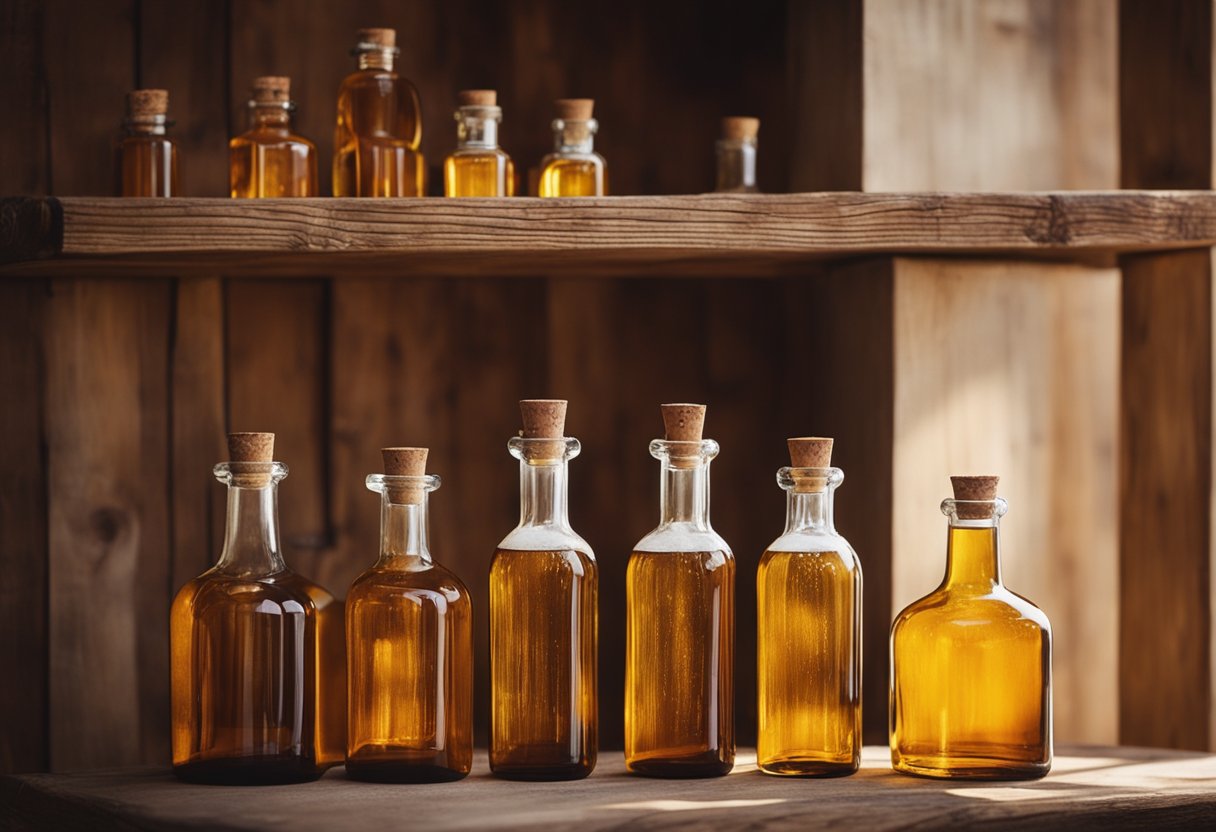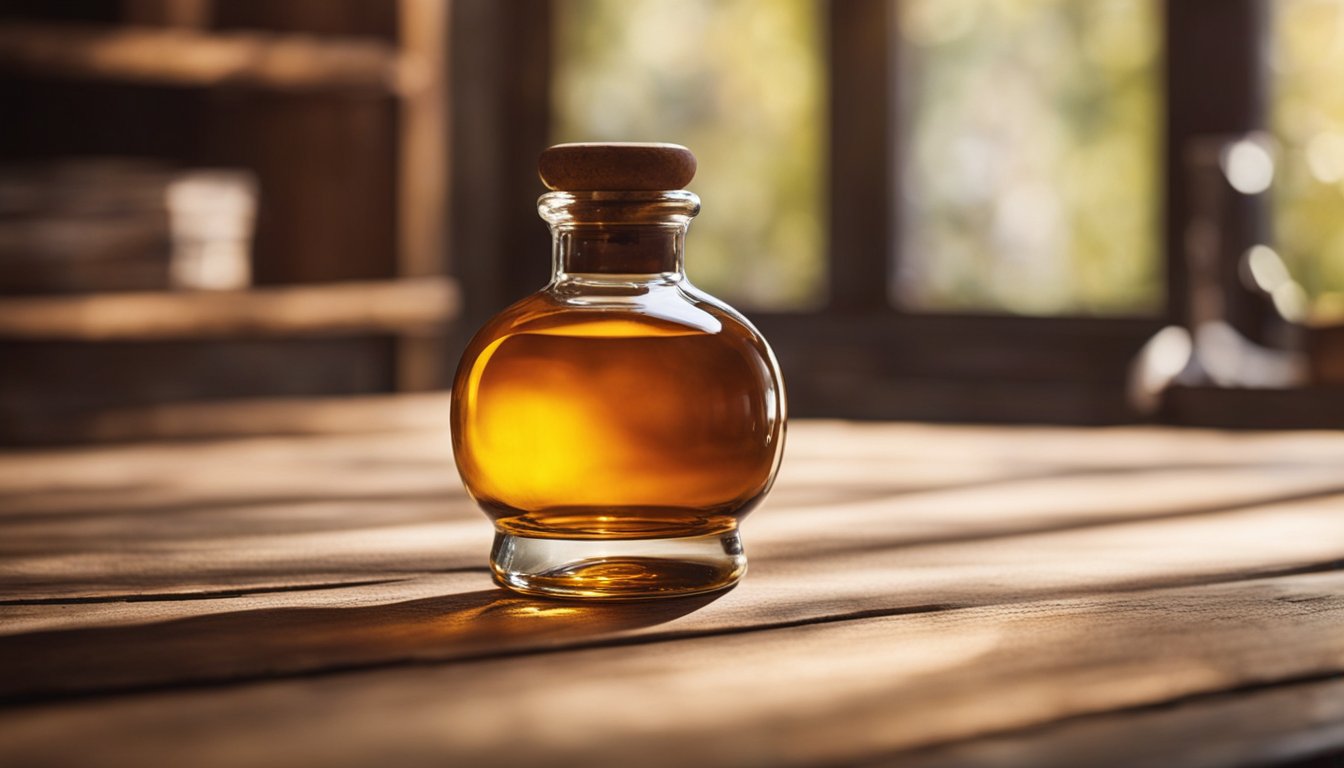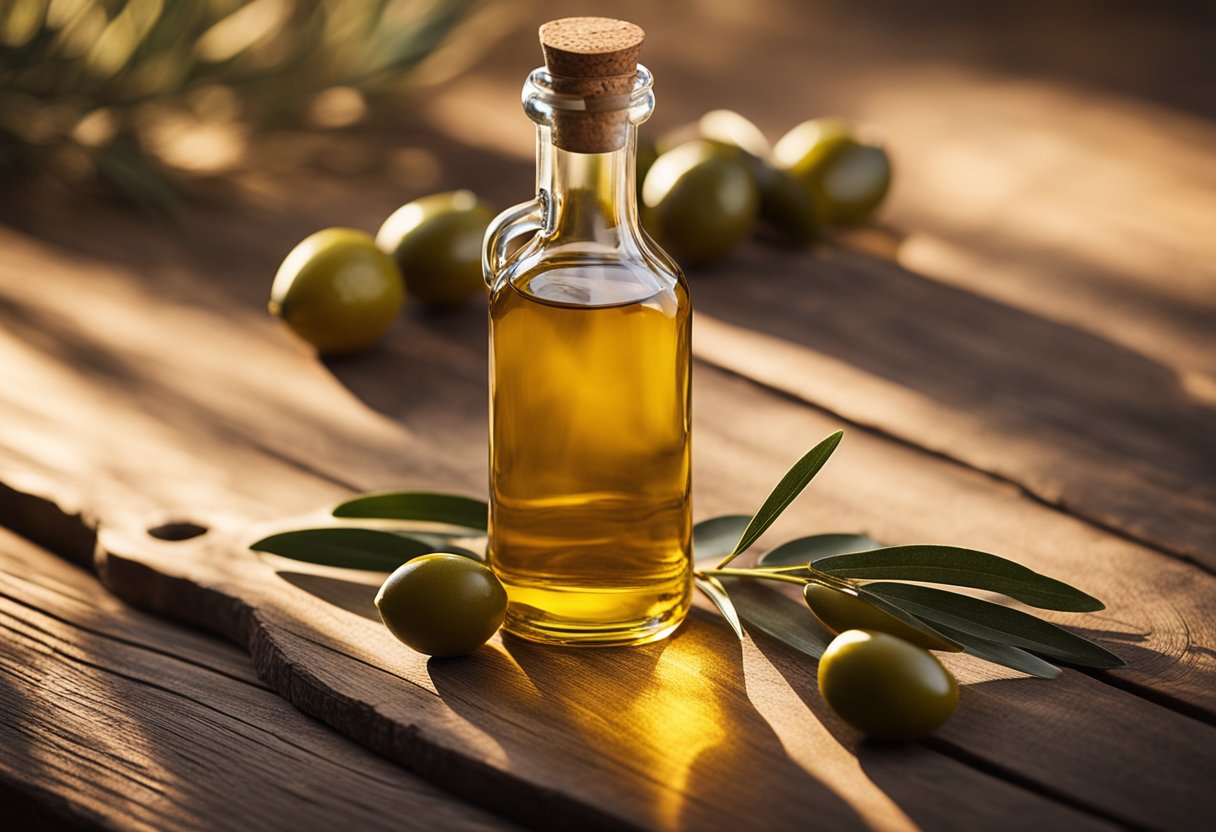If you are a fan of homemade jams, jellies, and preserves, then you know how important it is to have the right containers to store them in. Glass jam jars with lids are the perfect solution for keeping your homemade goodies fresh and delicious. These jars come in a variety of sizes and styles, making them ideal for any type of preserve you can think of.

One of the great things about glass jam jars with lids is that they are reusable. This means that you can make a batch of your favorite jam or jelly, store it in a glass jar, and then reuse that jar for your next batch. Not only is this an eco-friendly option, but it can also save you money in the long run.
Another benefit of glass jam jars with lids is that they are airtight, which helps to keep your preserves fresh for longer. This is especially important if you are making large batches of jam or jelly and need to store them for an extended period of time. With airtight glass jars, you can rest assured that your preserves will stay fresh and delicious for weeks or even months.
History of Jam Jars with Lids

When it comes to preserving food, canning has been a popular method for centuries. However, the use of jam jars with lids is a relatively recent development. In the early 19th century, glass jars with metal lids were introduced, but they were not ideal for preserving jams and other acidic foods. The lids were often made of tin, which could corrode and rust over time, leading to spoilage of the food inside.
In 1858, a tinsmith named John Landis Mason patented a new type of jar that had a threaded screw-top lid made of zinc. These jars, known as Mason jars, were a significant improvement over previous designs. The threaded lid created an airtight seal, which prevented air and bacteria from entering the jar and spoiling the food inside.
Mason jars quickly became popular for preserving a variety of foods, including jams and jellies. They were especially popular among home canners, who appreciated the convenience and reliability of the new design. Over time, the design of the Mason jar evolved, with improvements to the lid and the addition of new features like measurement markings on the side of the jar.
Today, jam jars with lids are available in a wide range of sizes, shapes, and styles. They are used not only for preserving jams and jellies but also for storing other foods, such as sauces, pickles, and chutneys. Some jam jars even come with decorative lids or labels that make them ideal for gift-giving.
Overall, the history of jam jars with lids is a fascinating one. From the early days of canning to the modern era of home preserving, these jars have played an important role in helping people preserve and enjoy their favorite foods. Whether you are a seasoned canner or a beginner, a jam jar with a lid is an essential tool for preserving your favorite foods and creating delicious homemade treats.
Types of Jam Jars with Lids

When it comes to preserving your homemade jams, jellies, and marmalades, choosing the right jar is just as important as the recipe itself. Here are the three main types of jam jars with lids to consider:
Glass Jars
Glass jars are the most popular type of jam jar, and for good reason. They are sturdy, reusable, and allow you to see the beautiful colors and textures of your preserves. Glass jars are also easy to clean and sanitize, which is important for food safety. You can find glass jars with a variety of lid types, including twist-off lids, snap-on lids, and metal lids with a rubber seal.
Plastic Jars
Plastic jars are a great alternative to glass jars, especially if you’re worried about breakage. They are lightweight, shatterproof, and often come with airtight lids to keep your preserves fresh. However, plastic jars are not as environmentally friendly as glass jars, and they may not be suitable for long-term storage.
Decorative Jars
If you’re looking to give your homemade preserves as gifts or sell them at a farmers’ market, decorative jars can add a special touch. These jars come in a variety of shapes, sizes, and colors, and often have unique lid designs. However, decorative jars may not be as practical for everyday use, as they can be more fragile and harder to clean.
No matter which type of jam jar you choose, make sure it has a tight-fitting lid to keep air out and prevent spoilage. And don’t forget to label your jars with the date and type of preserve, so you know when it was made and what’s inside.
Sealing Techniques
When it comes to preserving your homemade jam, sealing the jars properly is crucial. There are different techniques you can use to achieve a good seal, depending on the type of jar you have. In this section, we’ll discuss three common sealing techniques: wax sealing, screw tops, and clip tops.
Wax Sealing
Wax sealing is a traditional method that involves pouring hot wax over the jam to create an airtight seal. This technique works best for jams that will be consumed within a few months, as the seal may not be as secure as other methods.
To use this method, first, sterilize your jars and lids by boiling them in water for 10 minutes. Next, fill the jars with hot jam, leaving about 1/4 inch of headspace. Melt some paraffin wax in a double boiler or a heatproof bowl set over a pot of simmering water. Pour the melted wax over the jam, making sure to cover the entire surface. Let the wax cool and harden before storing the jars in a cool, dark place.
Screw Tops
Screw tops are the most common type of lid used for jam jars. They are easy to use and provide a secure seal that can last for up to a year. To seal your jam jars with screw tops, follow these steps:
- Sterilize your jars and lids by boiling them in water for 10 minutes.
- Fill the jars with hot jam, leaving about 1/4 inch of headspace.
- Wipe the rim of each jar with a clean, damp cloth to remove any residue.
- Place the lid on top of the jar and screw the band on until it is tight.
- Place the jars in a water bath canner and process for the recommended time based on your recipe.
Clip Tops
Clip tops, also known as bail lids, are another popular option for sealing jam jars. They consist of a glass jar with a metal clamp and rubber gasket to create an airtight seal. Clip tops are reusable and can last for years if cared for properly.
To seal your jam jars with clip tops, follow these steps:
- Sterilize your jars and lids by boiling them in water for 10 minutes.
- Fill the jars with hot jam, leaving about 1/4 inch of headspace.
- Wipe the rim of each jar with a clean, damp cloth to remove any residue.
- Place the rubber gasket on the jar and secure it with the metal clamp.
- Process the jars in a water bath canner for the recommended time based on your recipe.
By using one of these sealing techniques, you can ensure that your homemade jam stays fresh and delicious for months to come.
Labeling and Decoration
When it comes to labeling and decorating your jam jars, there are a few things you should consider to make them look their best. In this section, we’ll cover the materials you can use for labeling your jars and some design ideas to make them stand out.
Label Materials
There are several materials you can use for labeling your jam jars, including:
- Sticker paper: This is a popular option because it’s easy to print on and stick to your jars. You can find full-page sticker paper that you can cut to size or pre-cut labels that you can print on and peel off.
- Washi tape: This decorative tape can add a pop of color and pattern to your jars. You can use it to create stripes, borders, or even cover the entire jar.
- Chalkboard paint or labels: Chalkboard labels or paint can give your jars a rustic and customizable look. You can write on them with chalk and easily erase and change the label as needed.
- Twine or ribbon: You can tie twine or ribbon around your jars to add a decorative touch. You can also attach a tag to the twine or ribbon to label your jars.
Design Ideas
Here are some design ideas to help inspire you when decorating your jam jars:
- Colorful labels: Use bright and bold colors to make your labels stand out. You can also match the label color to the color of the jam inside the jar.
- Patterned labels: Use patterned paper or washi tape to create unique and eye-catching labels.
- Stamped labels: Use stamps to create a custom label design. You can use letter stamps to spell out the jam flavor or use decorative stamps to create a design.
- Vintage labels: Use vintage or retro-inspired labels to give your jars a nostalgic and timeless look.
- Natural labels: Use materials like kraft paper or brown paper to create a natural and organic look. You can also use twine or ribbon to tie a tag onto the jar.
With these labeling and decoration ideas, your jam jars with lids will look beautiful and unique. Experiment with different materials and designs to find the perfect look for your homemade jam.
Preservation and Storage
Preserving jam in jars is a great way to enjoy the flavor of seasonal fruits all year round. Proper preservation techniques ensure that your jam stays fresh and flavorful for as long as possible. Here are some tips to help you preserve and store your jam jars with lids.
Sterilization Methods
Before filling your jam jars with lids, it is important to sterilize them to prevent contamination and spoilage. There are several methods you can use to sterilize your jars:
- Boiling: Place your jars and lids in a large pot of boiling water for at least 10 minutes. Remove the jars and lids with tongs and let them air dry on a clean towel.
- Oven: Preheat your oven to 225°F (107°C). Place your jars and lids on a baking sheet and heat them in the oven for at least 10 minutes. Remove the jars and lids with oven mitts and let them air dry on a clean towel.
- Dishwasher: Run your jars and lids through a hot cycle in the dishwasher. Remove the jars and lids with clean tongs and let them air dry on a clean towel.
Shelf Life
Properly preserved jam can last up to one year when stored in a cool, dry place away from direct sunlight. Once opened, store your jam in the refrigerator and consume within 2-3 weeks. To check if your jam is still good, look for signs of mold or discoloration. If you notice any of these signs, discard the jam immediately.
By following these simple preservation and storage tips, you can enjoy your homemade jam for months to come.
Environmental Impact and Recycling
When it comes to jam jars with lids, recycling is an important consideration. Glass jars are highly recyclable and can be recycled over and over again without losing quality. However, the lids on these jars can be a bit trickier to recycle.
Most jar lids are made of metal, typically aluminum or steel, which is a highly recyclable material. However, the recyclability of jar lids may vary depending on your local recycling facility’s guidelines and the specific composition of the lid, such as whether it contains non-recyclable materials like plastic or rubber.
It’s important to check with your local recycling facility to see if they accept jar lids for recycling. Some providers accept metal lids in mixed recycling, while others may require you to remove the lids and recycle them separately. For example, Waste Management accepts 3-inch lids in mixed recycling in some of its service areas [1].
In addition to checking with your local recycling facility, you can also look for “widely recyclable” labels on the lid [2]. If the lid is not recyclable, consider reusing it for other purposes, such as storage or crafts.
Recycling jar lids has a positive impact on the environment. Recycling metal uses significantly less energy than producing new metal. In fact, recycling one ton of steel conserves 2,500 pounds of iron ore, 1,400 pounds of coal, and 120 pounds of limestone [3]. By recycling your jar lids, you can help conserve natural resources and reduce greenhouse gas emissions.
Frequently Asked Questions
What size jars are best for jam?
When it comes to selecting the right size for your jam jars, it depends on how much jam you plan to make. If you are making jam for personal use or as a gift, you may want to consider smaller sizes, such as 4 oz or 8 oz jars. However, if you are making jam to sell or distribute, larger sizes, such as 16 oz or 32 oz jars, may be more appropriate. Keep in mind that larger jars may require longer processing times and may be more difficult to handle.
How do you seal jam jars with lids?
To seal jam jars with lids, you will need to follow a few simple steps. First, sterilize your jars and lids by boiling them for at least 10 minutes. Then, fill the jars with hot jam, leaving about 1/4 inch of headspace. Wipe the rims of the jars with a clean, damp cloth to remove any residue or stickiness. Place the lid on top of the jar and screw on the band until it is fingertip tight. Finally, process the jars in a boiling water bath for the recommended amount of time.
What is the difference between a Mason jar and a jam jar?
Mason jars and jam jars are both types of canning jars, but there are some differences between the two. Mason jars are typically made of thicker glass and have a threaded neck that allows for a secure seal with a two-piece lid. Jam jars, on the other hand, are often made of thinner glass and have a narrower neck that requires a one-piece lid. Additionally, Mason jars come in a wider range of sizes and styles than jam jars.
What are the best materials for jam jars and their lids?
When it comes to selecting the best materials for jam jars and their lids, there are a few options to consider. Glass jars are the most popular choice, as they are durable, easy to clean, and allow you to see the contents inside. For lids, metal lids with a rubber seal are the most common choice, as they create an airtight seal that helps to preserve the freshness of the jam. Plastic lids are also available, but they may not provide as tight of a seal.
How can I find vintage style jam jars with lids?
If you are looking for vintage style jam jars with lids, you may want to consider shopping at antique stores, flea markets, or online marketplaces such as Etsy or eBay. You can also try searching for “vintage jam jars” or “retro canning jars” online to find specialty retailers that offer a variety of styles and sizes.
What are the options for buying jam jars in bulk?
If you need to buy jam jars in bulk, there are several options available. You can purchase them online from retailers such as Amazon or Walmart, or from specialty canning supply stores. Some grocery stores may also carry bulk packages of canning jars. Additionally, you may be able to find bulk jam jars at wholesale stores or through restaurant supply companies.











